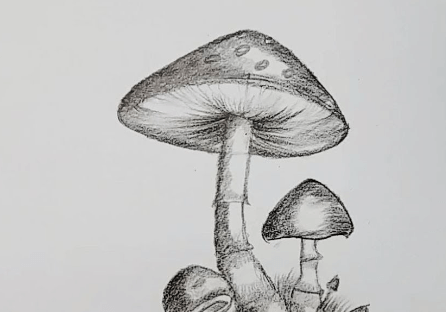Drawing:Plcxcsjeqpq= Mushroom

The artistry of drawing mushrooms requires more than mere observation; it demands an understanding of their complex anatomy, from the delicate gills to the robust stem. Mastering essential techniques such as shading and texture is critical in achieving lifelike representations that capture their essence. Furthermore, the inspiration drawn from nature can significantly enhance an artist’s work. As we explore the nuances of this fascinating subject, one must consider how these elements can transform a simple sketch into an extraordinary piece of art that evokes curiosity and wonder. What lies beyond the canvas is worth contemplating.
Understanding Mushroom Anatomy
To comprehend the complexity of mushrooms, one must first examine their anatomical structure, which comprises key components such as the cap, gills, stem, and mycelium, each serving distinct biological functions.
The cap structure protects reproductive organs, while gill arrangement facilitates efficient spore dispersal.
The mycelium network plays a crucial role in nutrient absorption, illustrating the intricate interdependencies within fungal biology.
See also: Drawing:Pjyguv9kioe= Armadillo
Essential Drawing Techniques
Effective drawing techniques for mushrooms require a thorough understanding of form, texture, and shading to accurately represent their unique anatomical features.
Employing varied line quality enhances depth, while effective shading techniques can create realistic forms.
Mastering perspective drawing allows for dimensionality, and color blending adds vibrancy, enabling artists to capture the intricate beauty of mushrooms with precision and artistic freedom.
Creative Inspiration Sources
Exploring diverse creative inspiration sources can significantly enhance an artist’s ability to depict mushrooms with originality and depth.
By immersing oneself in nature sketches and drawing from various artistic influences, artists can cultivate a richer understanding of form, color, and texture.
This process not only broadens their artistic repertoire but also fosters a deeper connection with the natural world, ultimately enriching their artistic expression.
Conclusion
In conclusion, mastering the art of mushroom drawing requires a comprehensive understanding of their anatomy, coupled with effective drawing techniques.
Observational skills play a crucial role in capturing the intricate details of mushrooms.
Notably, over 10,000 known species of fungi exist, each presenting unique characteristics that can inspire artistic expression.
By harnessing these elements, artists can create vivid representations that not only reflect the beauty of mushrooms but also contribute to a greater appreciation of their ecological significance.




